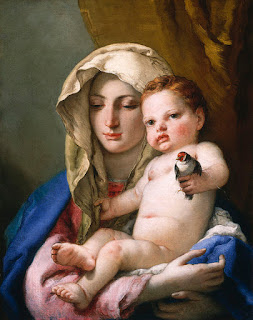Encore: Hail Holy Queen/Salve Regina

Continuing with our Marian theme for the month of May, this is the Dumb Ox's favorite prayer the Hail Holy Queen better known as the Salve Regina. Here is the prayer in English and in Latin: Hail Holy Queen Hail, holy Queen, Mother of Mercy, our life, our sweetness and our hope. To thee do we cry, poor banished children of Eve; to thee do we send up our sighs, mourning and weeping in this valley of tears. Turn then, most gracious advocate, thine eyes of mercy toward us; and after this our exile, show unto us the blessed fruit of thy womb, Jesus. O clement, O loving, O sweet Virgin Mary. V./ Pray for us O holy Mother of God, R./ that we may be made worthy of the promises of Christ. Salve Regina Salve Regina, Mater misericordiae, vita, dulcedo, et spes nostra, salve. ad te clamamus exsules filii Hevae, ad te suspiramus, gementes et flentes in hac lacrimarum valle. Eia, ergo, advocata nostra, illos tuos misericordes oculos ad nos converte; et Jesum,




